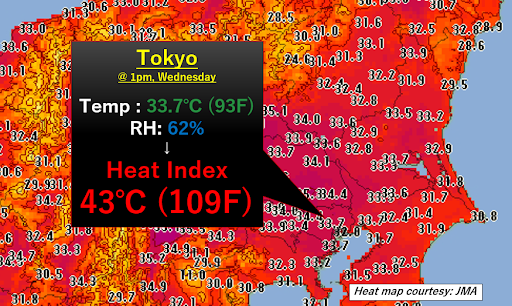After being postponed, the Olympics finally happened this year as Tokyo welcomed the summer 2020 Olympic and Paralympic games. However, with August being the hottest month of the year in Japan, the Olympians struggled with Tokyo’s oppressive heat. Temperatures reached as high as 33.7°C with relative humidity of 62%, making it feel like 43°C...

With this stifling heat in mind, how can Olympians avoid injury in future and ensure they stay safe during the Olympic games? Jacques Van Blerk, Sports and Exercise Medicine tutor, shares his thoughts on what can be done short-term to combat the effects of heat stress on the Olympians performance.
The opening stages of the Tokyo Olympics were marked by extraordinary conditions for those competing in outdoor events. August is listed as the hottest month in Japan with temperatures in the mid-30s (degrees Celsius) accompanied by an average humidity of 64%. The effects of heat on athletic performance depend on environmental temperature, relative humidity, the ability to regulate your core temperature, intensity and duration of exercise Wegmann et al.(2012. P. 546-64). Excessive sweating, in an attempt to regulate increasing body temperature during exercise, can lead to dehydration which could exacerbate thermal and cardiovascular strain impairing aerobic performance Racinais et al.(2015, p. 925-938). The loss of electrolytes accompanying sweating could impair muscle performance and coordination. Endurance athletes, due to the nature of their sport, have suffered most with Russian Olympic Committee tennis star Daniil Medvedev telling the chair umpire: “I can finish the match, but I can die.” There seemed to be no end in sight to these conditions that the rest of the Olympians and Paralympians had to face, so what could be done in the short term to counter the impact of heat on performance?
Research suggests that pre-cooling can reduce the stress on the thermoregulatory system by reducing heat stored in the body thereby increasing heat storage capacity. Reduced heat stress will reduce sweating which in turn will slow down plasma reduction and the dangers of dehydration. Studies also report a redistribution of blood from the periphery, due to reduced skin temperatures with pre-cooling, which will increase central blood volume and perfusion of working muscles. It therefore comes as no surprise that Team GB travelled with over a hundred ice vests as well as a slushie machine.
With regards to performance benefits of pre-cooling there is a greater effect with increasing ambient temperatures as well as longer exercise durations of up to 60 minutes after which the pre-cooling effect will decrease. Elite athletes with high Vo2 max values have also been shown to benefit from pre-cooling Wegmann et al.(2012. P. 546-64). The question then begs whether pre-cooling has a direct effect on any of the performance variables for these athletes.
Minnett et al.(2012, p. 907-915) did a study on 10 medium fast bowlers to see if pre-cooling would have a physiological and performance effect during a 6 over spell in high temperatures (31.9 ±2.1° C) and humidity (63.5 ± 9.3%), similar to what we saw in Tokyo recently. Performance characteristics required by fast bowlers resemble those found in a lot of Olympic sports namely: repeatability of accurate delivery at a high intensity while fatigued. This does make them a strange but worthy comparable study population when it comes to the influence of heat on performance. Results showed that pre-cooling did not improve bowling performance in terms of ball speed, accuracy or run up speed but did reduce skin and core temperature, pre-over heart rates, sweat loss as well as ratings of perceived exertion and thermal sensation. What stood out from this study was that even though pre-cooling did not influence performance variables directly the factors that it did influence, if left to heat stress without any pre-cooling, could have a detrimental effect on physiological and cognitive performance.
Not all athletes we encounter will be competing for Olympic gold. However, odds are that if you are working with outdoor sports these athletes will either train or compete in heat at some stage. Pre-cooling could be a viable and relatively affordable method to counter heat-induced performance decline.
Jacques Van Blerk is a tutor for our Sports and Exercise Medicine Postgraduate Diploma and MSc programmes, which include modules such as Anatomy, Physiology and Psychology of Sport and Exercise, Exercise and Sport in Relation to Chronic Disease and Populations and Injury Prevention, Rehabilitation and Return to Exercise.
If you are interested in the Sports and Exercise Medicine course and would like to improve your knowledge in topics such as these, you can apply now for our next intake.
